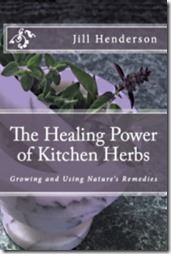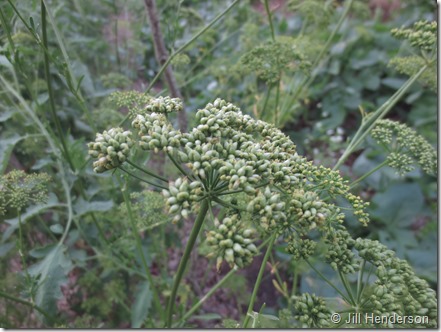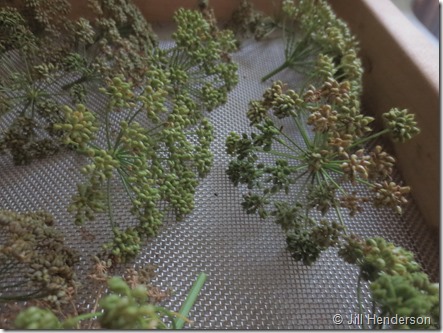 Jill Henderson – Show Me Oz
Jill Henderson – Show Me Oz
Parsley: That ambiguous and often frilly herb that many gardeners grow, but few actually use. If you haven’t grown parsley yourself, you’ve surely bought it at least once or twice in your life to use as a garnish for dressing up platters or plates. Or, perhaps you’ve gone so far as to sprinkle it sparingly atop mashed potatoes or added a pinch here in there when making soup or stuffing. And while many recipes call for at least a bit of fresh parsley, most people don’t go to the trouble – or worse yet, they use bland dried parsley from the grocery store. (Egad!) If this sounds like you, I’m about to rock your kitchen and your herbal medicine chest by showing you that parsley is much more than a pretty garnish: it’s a virtual powerhouse of flavor and a game-changer for your health. And best of all – it’s super easy to grow and use.
Growing Parsley
Before setting out, it’s good to know a little about the various kinds of parsley one can grow. First, there are the ever popular curly-, triple curled- or French parsleys (Petroselinum crispum), which are often used as a garnish. Then there are the variants of Italian-, flat-leaved- or plain-leaved parsley (P. crispum var. latifolium), which aren’t as pretty, but are sweeter in flavor and generally preferred by chefs. These main types are followed by the lesser known and grown, Hamburg parsley (P. crispum var. tuberosum), which is prized for its giant edible root. Last but not least is the obscure “parsley seed”, which can be obtained from all of the above parsley types.
Parsley is a biennial herb that is most often grown as an annual because of bitterness that develops in the leaves during the second year of growth. Parsley seed can be winter-sown or direct-seeded in spring as early as the ground will allow cultivation. And while parsley may germinate in as little as 10 days, even the very freshest of seeds may take as long as 21 days. For best results, do not start parsley in pots as the long taproots are easily injured, resulting in smaller or stunted plants later on. Once up, seedlings should be thinned to stand about 12 to 18 inches (30 to 46 cm) apart in all directions. Parsley prefers full sun to light afternoon shade, and moist well-drained soil. Begin harvesting as soon as the plants have at least 6 pairs of leaves, but take care to avoid removing or injuring the newly forming leaves at the crown.
Parsley Seed
As a biennial, parsley’s first year’s growth consists only of the basal rosette. To obtain parsley seed, plants must be allowed to overwinter in the garden. In late summer, stop harvesting leaves and let the plants put on an abundance of healthy growth before frost sets in. If your plants are growing very close together, thin them out to stand about 18 to 24 inches apart to allow for their flowering expanse next spring. Finally, be sure to put down a good layer of straw or leaf mulch around each plant to keep them snug during the cold winter months.
By early summer of the next season, parsley will begin to send up tall flowering stalks with many side branches forming throughout the season. Plants may reach heights of 24 to 32 inches tall. Staking is helpful to keep seed heads from pulling the plant to the ground. Like dill, parsley bears flowers for a long period of time, so plan on collecting and processing seed heads regularly. Select heads with plump seeds and gather just as they begin to turn yellow or gold in color.
Take my advice and don’t wait too long after cutting to remove the actual seeds from the heads. For one, parsley has a tendency to shatter (i.e. scatter and self-sow) ripe seeds everywhere. And I mean EVERY WHERE! But more importantly, if you let them dry completely on the heads, the itsy bitsy stems that the seeds are attached to will also come off and are a real pain in the you-know-what to separate from the seeds. If all you want to do with the seeds is sow them, by all means, let them ripen and dry right on the heads (this is also better from a viability/germination standpoint). But for use as food or medicine…get those seeds off ASAP.
 Support this blog and learn more about using common herbs
Support this blog and learn more about using common herbs
for food and medicine in my book:
The Healing Power of Kitchen Herbs
Available in the Show Me Oz Bookstore
Look inside!
Kicking it in the Kitchen With Parsley
Parsley has to be one of the most ubiquitous herbs in the kitchen. In other words, it is much used but little admired. But what’s not to like? Parsley adds color, texture, and a fresh crispness to food that cannot be duplicated by any other herb.
I hate to tell you this, but parsley is not just a pretty garnish! If you eat that bit of green on the side of your plate, it will sweeten your breath better than any sugar-filled mint and give you a shot of vitamin C to boot. But really, the good stuff happens when you cook with it!
Fresh parsley leaf is best used to season fish, seafood, and poultry. Add chopped or minced parsley to egg, tuna, or potato salads; salsa, tomato sauce, soup, cheese, or fresh vegetables; or blend it into dips, dressings, creamy sauces, and vinegars. And I don’t mean just an itty bit – really go for it – it’s sooo good!
I’ll bet you’ve heard this line before (and I hate to admit it, but I’ve said it myself many moons ago…) the flavor of parsley is destroyed during prolonged heating. Bah, humbug! I’m here to tell you that this is just flat out wrong and I know it for a fact. Can you add simmer or bake parsley and still get great flavor? Heck, yeah. If you add it to dishes just before serving is the flavor stronger? Definitely. And it’s got a greener taste, too. So, go ahead and add parsley to your hot dishes while cooking and if you want another level of flavor, sprinkle on some fresh just before serving, too. That’s the one-two parsley punch! And here’s a sneaky left hook for good measure. If you really want that deep parsley flavor in long-simmering dishes such as soups and stews, or in pickles (yeah, pickles!), use parsley root or seed instead of leaf and your food will jump for joy.
Parsley in the Herbal Pantry
Okay, so here’s where I lose some of you. Parsley as a medicinal? Yep. And a powerful one at that.
Parsley contains high levels of vitamin C and boasts the highest iron content of any edible plant (hello, women of child-bearing years!). Parsley also has a time-honored reputation as being an effective blood strengthening tonic and cleanser. Parsley root is used primarily to flush deposits and toxins from the kidneys and joints through diuretic and anti-inflammatory actions. In this capacity, it is used to treat gout, as well as rheumatism, arthritis, cystitis, edema, gallstones, and bladder and kidney infections. Not bad for boring old parsley, right?
Parsley root also stimulates menstruation and eases cramps (hallelujah!) and as a carminative, parsley is used to soothe indigestion, gas, bloating, flatulence, nausea, and other digestive disorders (double hallelujah!). When used as a soak or compress, parsley teas and decoctions reduce inflammation caused by rashes, hives, and minor wounds and has long been used to reduce skin redness and blotchiness, to lighten freckles and moles, and to add shine to lusterless hair. (One world of caution for pregnant women or those with weak or compromised kidney function – do not use parsley in medicinal doses internally without consulting your care professionals first. )
With all that going for it, who wouldn’t want to grow a big patch of parsley? At the very least, grow it for the swallowtail butterfly larva that feed only on parsley family plants. I sure have been awed and amazed at all this humble little herb can really do. In fact, during a recent kidney cleanse that called for parsley tea (a HUGE handful simmered in water to cover for three minutes), my husband and I found parsley tea not only cleansing and energizing, but kind of addictive, too. When it’s brewing it smells awful, and we thought “how are we going to choke this down”, but we were both pleasantly surprised. And now, we’re kind of hooked on it. Maybe you will be too!
Until th: Happy Gardening!
© 2016 Jill Henderson Feel free to share with a link back to the original article.
 The Healing Power of Kitchen Herbs
The Healing Power of Kitchen Herbs
Learn how to grow and use the world’s oldest, safest, and most medicinal herbs with this easy step-by-step guide! From starting seeds to preparing home remedies, The Healing Power of Kitchen Herbs is a treasured resource that you will turn to time and time again.
Available in the Show Me Oz Bookstore.
Look inside!
Jill Henderson is an artist, author, and the editor of Show Me Oz . Her books, The Healing Power of Kitchen Herbs, The Garden Seed Saving Guide and A Journey of Seasons can be found in the Show Me Oz Bookstore. Jill is a contributing author for Acres USA and Llewellyn’s Herbal Almanac and her work has appeared in The Permaculture Activist and The Essential Herbal.
DID YOU LIKE THIS ARTICLE?
Share Subscribe Enjoy!
…and don’t forget to tell your friends you got it from
All ads below this logo are not hosted, supported, or beneficial to Show Me Oz











Good post! Another reason to grow parsley, it’s very pretty when blooming.
Thanks, Mom. I agree. Parsley in flower is so pretty. If someone didn’t want or have an herb garden, it would look very nice as an upright focal point in a perennial flower bed – AND it feeds the larva of swallowtail butterflies! That alone is worth growing it!
It’s nice to see your Mom posting comments. My Mom does the same thing. But about that parsley. I LOVE to have parsley and cook with it and use it fresh in tabouli for instance. But I have not been able to get a good stand of it going the last couple years. I am going to put a lot more effort into it next spring.Thanks for this info here.
You gotta love Mom! She’s been into herbs a long time and is the best cook, ever! I still dream of her manicotti on my birthday every year… yum! I also like to cook with parsley (never made tabouli, though – very cool) but like you, I never seem to have enough. The heat here just does a number on them! I think I’m going to try germinating fresh seed right now and get it in the ground just as things are cooling down… wonder how it’ll do…